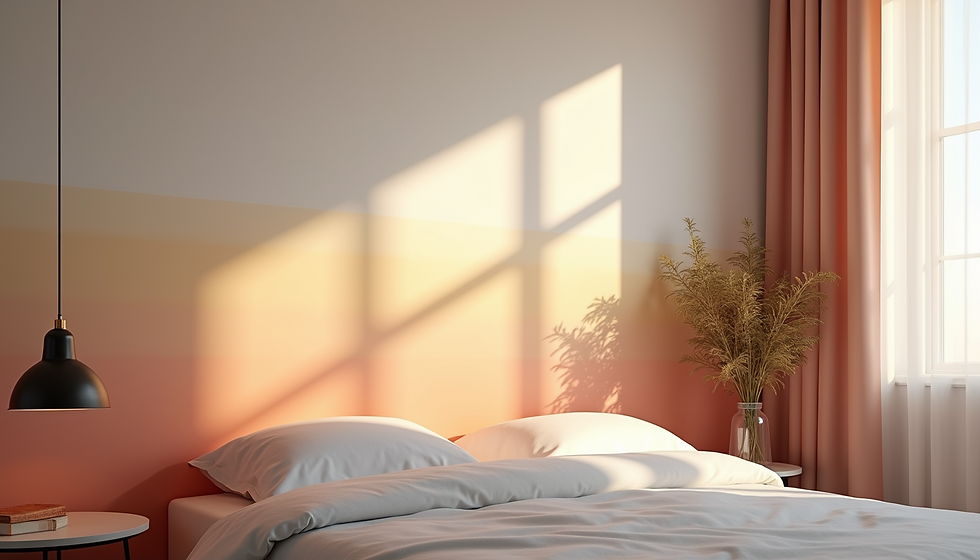Mastering Acoustic Serenity: Advanced Soundproofing Techniques for Walls and Ceilings
- Exceptional Drywall Contractor
- Aug 24
- 3 min read
Creating a peaceful environment is crucial for spaces where sound quality matters, like home theaters, music studios, or simply rooms meant to escape the noise of everyday life. Effective soundproofing for walls and ceilings can remarkably improve your experience by minimizing unwanted noise and enhancing acoustics. In this guide, we will discuss some practical soundproofing techniques suitable for both drywall professionals and DIY enthusiasts.
Understanding Soundproofing Basics
Before exploring specific techniques, it helps to grasp the fundamentals of soundproofing. Sound travels through both air and solid materials, and soundproofing aims to lessen the transfer of sound waves. You can achieve this through methods such as adding mass, dampening vibrations, and decoupling surfaces.
For instance, studies show that adding mass can reduce sound transmission by up to 50%. Applying these principles allows you to create a more acoustically pleasant environment in any room.
Choosing the Right Materials
The selection of materials is key when soundproofing walls and ceilings. While we won't cover mass-loaded vinyl (MLV) here, consider these effective alternatives:
Drywall: Using multiple layers of drywall can enhance sound isolation significantly. For better results, opt for soundproof drywall, specifically engineered to lower sound transmission.
Acoustic Caulk: This flexible sealant fills gaps around drywall seams and penetrations. It’s essential for preventing sound leaks.
Insulation: Installing fiberglass or mineral wool insulation between wall studs or ceiling joists effectively absorbs sound, cutting down on transmission. Studies indicate this can decrease sound transfer by up to 30%.
Resilient Channels: These metal channels can be installed to decouple the drywall from the framework, further minimizing sound transmission.
Soundproofing a Home Theater Room
Creating an ideal home theater requires a thoughtful approach to soundproofing. Here are key steps to enhance the acoustic environment:
1. Assess the Space
Start by checking the existing walls and ceilings for any weak points. Common areas to examine are windows, doors, and electrical outlets where sound may leak in or out.
2. Add Mass to the Walls
To improve soundproofing, consider adding another layer of drywall. Also, use a soundproofing compound between layers for even better effectiveness.
3. Insulate the Walls
Place sound-absorbing insulation between the wall studs. This step helps to block sound from passing through the walls.
4. Seal Gaps and Cracks
Employ acoustic caulk to seal any gaps around edges, outlets, and any other openings. A well-sealed space can significantly enhance sound isolation.
5. Install Resilient Channels
For advanced soundproofing, install resilient channels before the final layer of drywall. This decouples the drywall from the frame, further reducing sound transfer.

Soundproofing a Neighbor Wall
Sharing a wall with a neighbor amplifies the need for effective soundproofing. Here are techniques to consider:
1. Identify Problem Areas
Listen closely for specific places where sound seeps through, like shared walls, ceilings, or floors.
2. Use Soundproof Drywall
Implement soundproof drywall on the shared wall. This product is denser and specifically crafted to minimize sound transmission.
3. Add Insulation
If feasible, add insulation within the wall cavity. This can significantly absorb sound and prevent it from traveling through.
4. Create a Decoupled Wall
For excellent soundproofing, consider building a second wall that is disconnected from the existing one. This may involve using resilient channels or constructing a staggered stud wall.
5. Seal All Gaps
Similar to soundproofing in a home theater, sealing gaps with acoustic caulk is essential. Make sure all edges and openings are tightly sealed to block sound leaks.

Enhancing Acoustics in Your Space
Ultimately, soundproofing walls and ceilings is vital for creating a peaceful atmosphere, whether for a home theater, a music studio, or any area where sound quality matters. By understanding soundproofing principles and applying effective techniques, you can significantly lower unwanted noise and improve your acoustic experience.
As a drywall contractor, mastering these soundproofing techniques not only amplifies your skill set but also positions you as an expert in the industry. Offering soundproofing services enables you to attract clients who wish to create their own acoustic retreats.
Investing time and resources into soundproofing pays off in the long run, providing you and your clients with the tranquility necessary to enjoy their spaces fully.
.png)



Comments